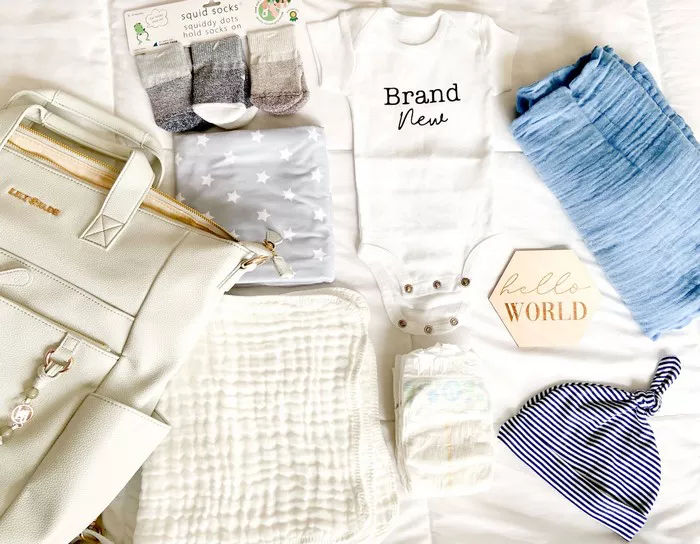Bringing a new life into the world is a joyous and sometimes overwhelming experience. As expectant parents prepare for their baby’s arrival, packing the hospital bag is a crucial task that often raises questions and uncertainties. One of the most common queries is: How many newborn outfits should you bring to the hospital? This guide aims to provide a detailed answer, covering various considerations and tips to ensure you are well-prepared for your baby’s first days.
Understanding the Hospital Stay
Length of Stay
The length of your hospital stay can vary depending on several factors such as the type of delivery (vaginal or cesarean), the health of the mother and baby, and hospital policies. Generally, a vaginal delivery may require a 24 to 48-hour stay, while a cesarean delivery might extend the stay to 3 to 4 days. Understanding this will help you plan the number of outfits your baby will need.
Hospital Policies
Hospitals often provide basic clothing items for newborns, such as onesies or swaddle blankets. It’s important to check with your hospital to see what they supply. This information will help you determine how many additional outfits you need to bring.
Factors Influencing the Number of Outfits
Frequency of Outfit Changes
Newborns can go through several outfits a day due to spit-ups, diaper leaks, and other messes. On average, you might need to change your baby’s outfit 2 to 3 times per day. Therefore, for a typical 2-day stay, you should plan for at least 4 to 6 outfits.
Weather and Season
The time of year and the hospital’s climate control can affect how you dress your baby. In colder months, you may need warmer clothing like long-sleeved onesies, hats, and socks, while in warmer weather, lighter outfits may suffice.
Personal Preferences
Some parents prefer to dress their baby in special outfits for photos or the trip home. If you have a particular outfit in mind for these occasions, ensure you include it in your packing list.
Types of Outfits to Consider
Onesies and Bodysuits
Onesies are a staple in a newborn’s wardrobe. They are easy to put on and take off, which is especially useful for frequent diaper changes. Aim to pack 3 to 4 onesies for a 2-day stay.
Sleepers and Gowns
Sleepers and gowns are comfortable for your baby and convenient for nighttime changes. Consider packing 2 to 3 sleepers or gowns.
Hats and Socks
Newborns can lose a lot of heat through their heads and feet, so packing a couple of hats and pairs of socks is essential, especially for colder months.
Special Outfits
If you have a special outfit for your baby’s first photo or the trip home, make sure it’s included in your bag. It’s often nice to have one special outfit even if the hospital provides basic clothing.
Packing for Comfort and Convenience
Easy Access
Pack your baby’s outfits in a separate, easily accessible section of your hospital bag. This will make it simpler to grab what you need without rummaging through other items.
Consider Size Variations
Newborn sizes can vary significantly. Some babies may fit into preemie sizes, while others may go straight to 0-3 months clothing. It’s wise to bring a couple of options to ensure a good fit.
Sample Packing List
For a standard 2-day hospital stay, here is a sample packing list:
- 3 to 4 onesies
- 2 to 3 sleepers or gowns
- 2 hats
- 2 pairs of socks
- 1 special outfit for going home
- 1 extra outfit in a slightly larger size (0-3 months)
Additional Tips for Packing
Label Your Bag
Label your baby’s section of the hospital bag with their name or a distinguishing mark. This can be helpful if hospital staff need to assist with your belongings.
Bring a Laundry Bag
Include a small laundry bag for dirty clothes. This will help keep your hospital bag organized and separate clean items from soiled ones.
Check for Allergies
Ensure that the baby clothes you pack are washed in hypoallergenic detergent, as newborns have sensitive skin and may react to strong chemicals.
Post-Delivery Adjustments
Unplanned Extensions
Be prepared for the possibility that your stay may be longer than expected due to medical reasons. Packing a few extra outfits can alleviate stress in such situations.
Visitors and Photos
Consider that you may have visitors or want to take photos. Having a couple of extra cute outfits can be useful for these occasions.
Conclusion
Preparing for your baby’s arrival involves many details, and packing the right number of outfits for the hospital is one of them. By considering the length of your stay, the hospital’s provisions, the season, and your personal preferences, you can ensure that your newborn is comfortable and well-dressed. Remember, it’s better to have a few extra outfits than to run out, so err on the side of caution. With this comprehensive guide, you are well-equipped to make informed decisions and enjoy your baby’s first days with peace of mind.
Final Thoughts
Bringing your baby home is a momentous occasion, and having everything you need at the hospital helps ensure a smooth transition. Each parent and baby’s needs are unique, so use this guide as a framework and adjust based on your specific circumstances. Congratulations on your new addition, and best wishes for this exciting journey ahead!


